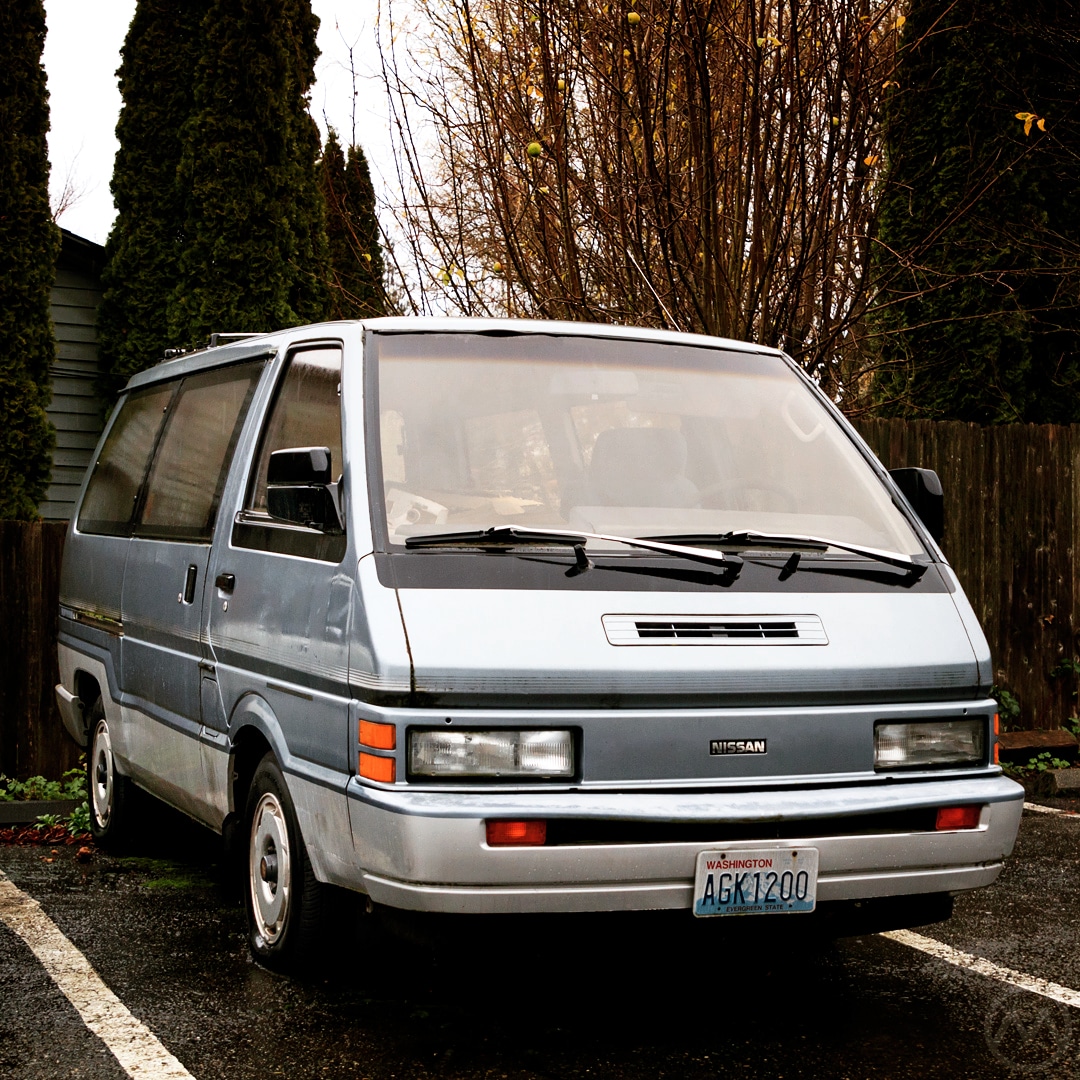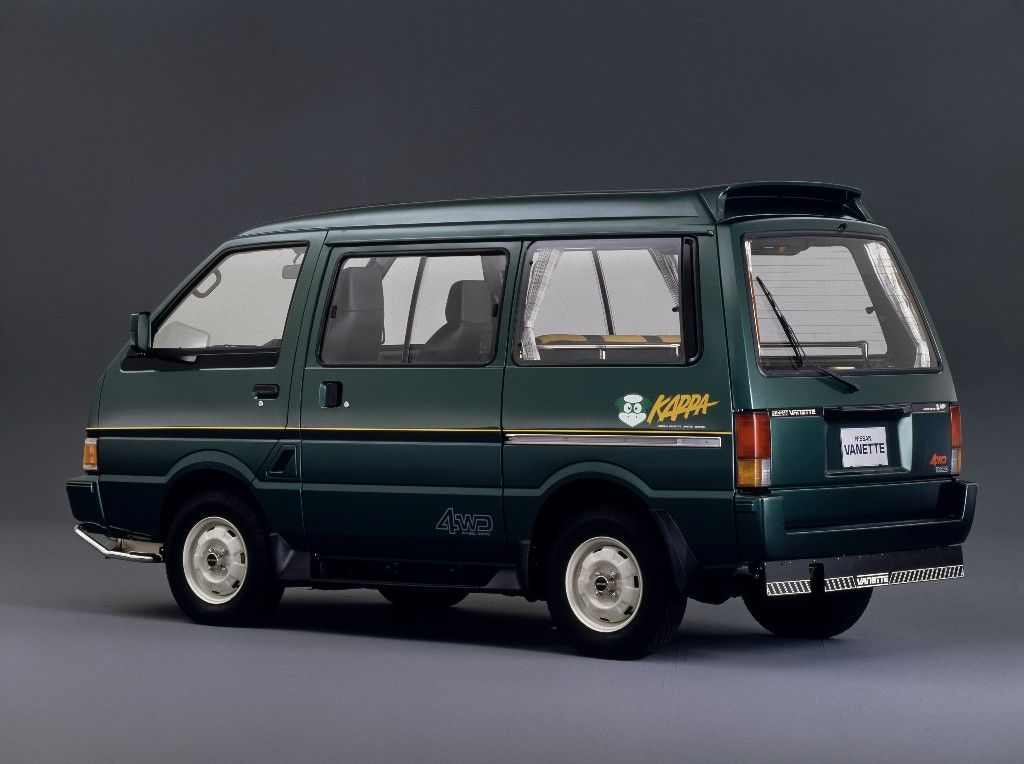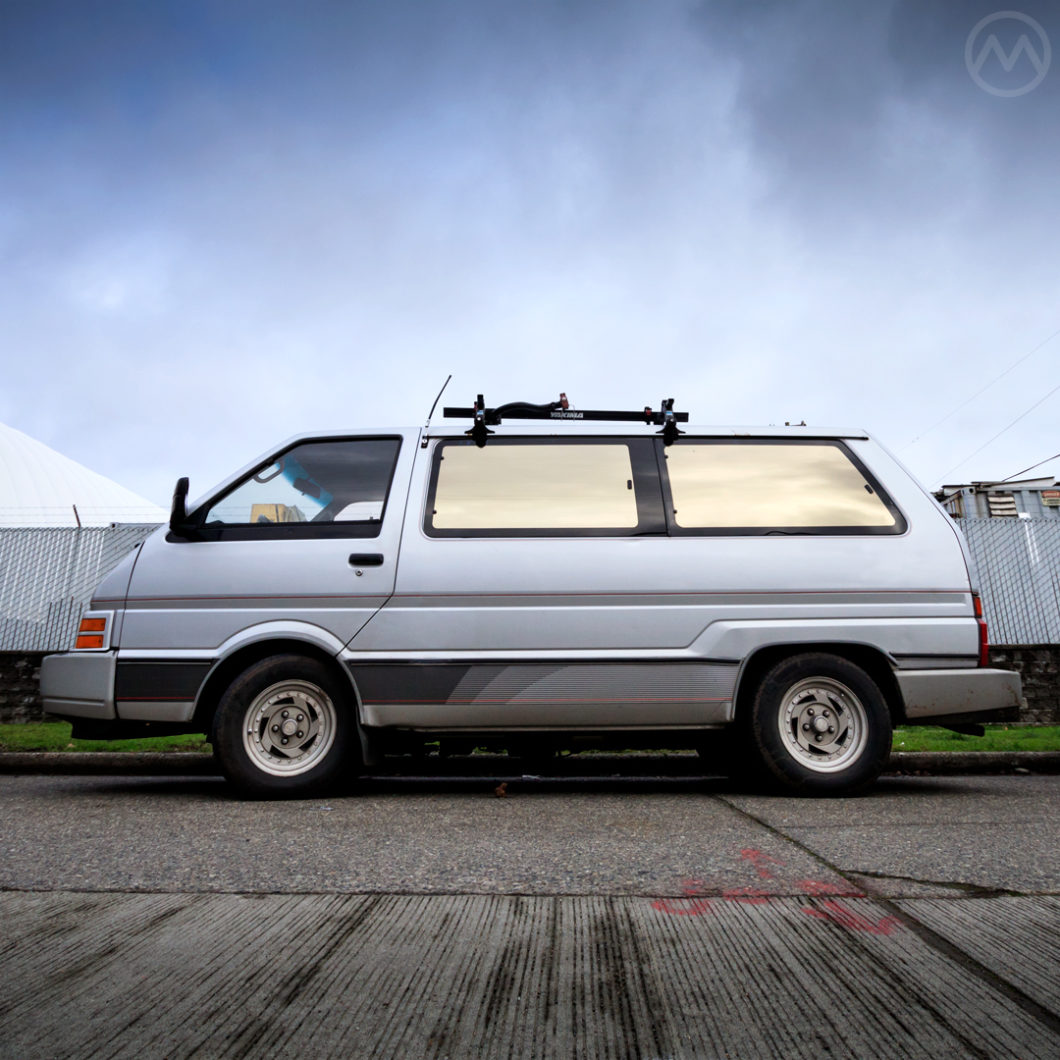If you’re involved in almost any way with new and late-model cars, then you know that the past decade has seen a tidal wave of recalls, most infamously Dieselgate and the Takata airbag mess. Individual vehicles are sometimes bought back by manufacturers for defects, too, but it’s very rare that recalls turn into buybacks.
The innocent-looking minivans you see here are survivors of an engineering problem, a recall mess, *and* a buyback campaign.
Long before VW’s Dieselgate, back in 1994, the Nissan “Van” was the subject of the biggest buyback in U.S. history up to that time. The campaign followed multiple attempts to correct problems with the vans induced during the hurried process of turning what was a relatively slow JDM van into something that would satisfy customers who needed to drive from Dallas to San Antonio with the A/C on the whole time.
Origins of the Nissan Vanette
It all started well enough. Nissan’s C22 Vanette was the second generation of what had once been the Datsun Sunny Cab. That old truck was a Japan-only cabover pickup, one of many that plied Japan’s crowded roads. Like many of its contemporaries, it eventually got commercial and passenger van variations, morphing into the larger, more Nissan Vanette in 1978. It was the rough opposite of Toyota’s JDM LiteAce, which was similar in many ways and the smallest of a gaggle of Toyota “Aces.”
When Chrysler introduced its new minivans in 1983, they were wildly popular from the start. Knowing what was coming, Ford and GM had begun moving to counter them even before they went on sale. Toyota began work on such a van as well, but in the meantime both it and Mitsubishi recognized that they could at least try to compete by adopting existing Japanese-market vans to North American regs.
These vans were already in production, and while federalizing them would be expensive, they also stood to get in on the ground floor of hot new segment. Sort of. Toyota jumped in with a U.S. adaptation of its slightly larger TownAce, and Mitsubishi readied a U.S.-market version of its Delica.
Both were forward-control vans, a type of vehicle Americans had mostly fallen out of love with after the 1960s. Only Volkswagen still offered the type, with the Vanagon, and its customers were relatively limited despite it being the only thing resembling a “minivan” in the USA prior to 1983.
Nissan, watching from the sidelines, decided it would jump in too. It had the C22 Vanette handy and created its own Americanized version following the same pattern as Toyota and Mitsubishi.

The C22 was smaller than the TownAce and the Delica and it had a range of smaller engines. In Japan, where space was limited and speeds lower than, say, Texas interstates, the Vanette’s 1.2 to 2.0-liter mills were adequate if slow. The largest engine was the 2.0L Z20, which was only briefly certified for U.S. sale in the early 1980s.
Since Nissan did not expect to sell huge numbers of Vanettes stateside and that engine wasn’t deemed powerful enough for American consumers, it wasn’t worth certifying it again. Instead, the company shoehorned in a 2.4-liter Z24i four shared with the new Hardbody pickup and Pathfinder.
It’s here where things began to go off the rails.
Too hot to handle
The C22 arrived in 1987 and while it wasn’t very popular owing to the forward-control setup, it wasn’t bad to drive or look at. It looked less brick-like than the Mitsubishi and slightly more modern than the Toyota. It had lots more power than the JDM versions, good for getting up to speed and running the A/C all day. But the C22 was not designed for such a big engine, and while it worked okay in testing, it could overwhelm the cooling system and there was little extra air flow into the engine bay. That led to overheating and, eventually, actual engine fires.
Not every owner experienced these issues, but they were widespread and well reported at the time. In total, there were about 150 fires, which isn’t much considering 33,000 vans were sold, but that was still way too many.
Nissan issued four separate recalls, each an attempt to re-engineer the engine bay and cooling system on the fly. As with adapting a square air filter to a round hole on Apollo 11, it was not an easy job as there just wasn’t any way to fully rectify the problem. To start, it bought back 27 vans from dealers where they’d been traded in and used them as test mules to create fixes for better cooling.
The engineering fixes that Nissan made were undermined when some of the recalls were performed incorrectly, which only made the problem worse. At least five vans caught fire after the recalls were performed, which led to another round of buying vans. About 900 of them were collected before any sort of large-scale buyback program was contemplated.
By the time of these repairs, of course, the model was history; quietly axed in 1990 with plans for a replacement delayed.
Not wanting to invest any more time or money into the aging Vans after the four rounds of attempts to fix them, Nissan offered to buy them all back. They got around 90% of the owners to sell by offering $5,000 to $7,000 purchase prices plus $750-1,000 off a new Nissan, but a few owners thumbed their noses and opted to keep their vans. A very tiny number of those are still kicking around today, like the pair seen above.
In other markets without the Z24i problems, the C22 proved extremely successful as both a passenger and cargo van. In Australia and New Zealand a model similar to the U.S. version, sans the engine, was marketed as the Nissan Nomad. The vehicle, much changed, is still in production in India via Ashok Leyland (and was in production as a Nissan in Malaysia until 2010).

In Japan, the C22 was replaced by the C23 Serena, which superficially appeared to be more like a Chrysler/Renault style minivan on the outside, but was still front mid-engine and rear-drive underneath (sort of like the Toyota Previa), but it did not come stateside.
Not wanting to invest in any forward-control commercial-style vans while selling the Serena, the next-gen Vanette, debuting in 1994, was a rebadged version of the Mazda Bongo, part of a larger partnership with Ford (who owned a quarter of Mazda at the time). In the USA, this same Ford partnership yielded the 1993 Nissan Quest and Mercury Villager, both of which were far more popular than the Vanette had been.
No doubt more than a few Vanettes were traded in on Quests during the buyback.

